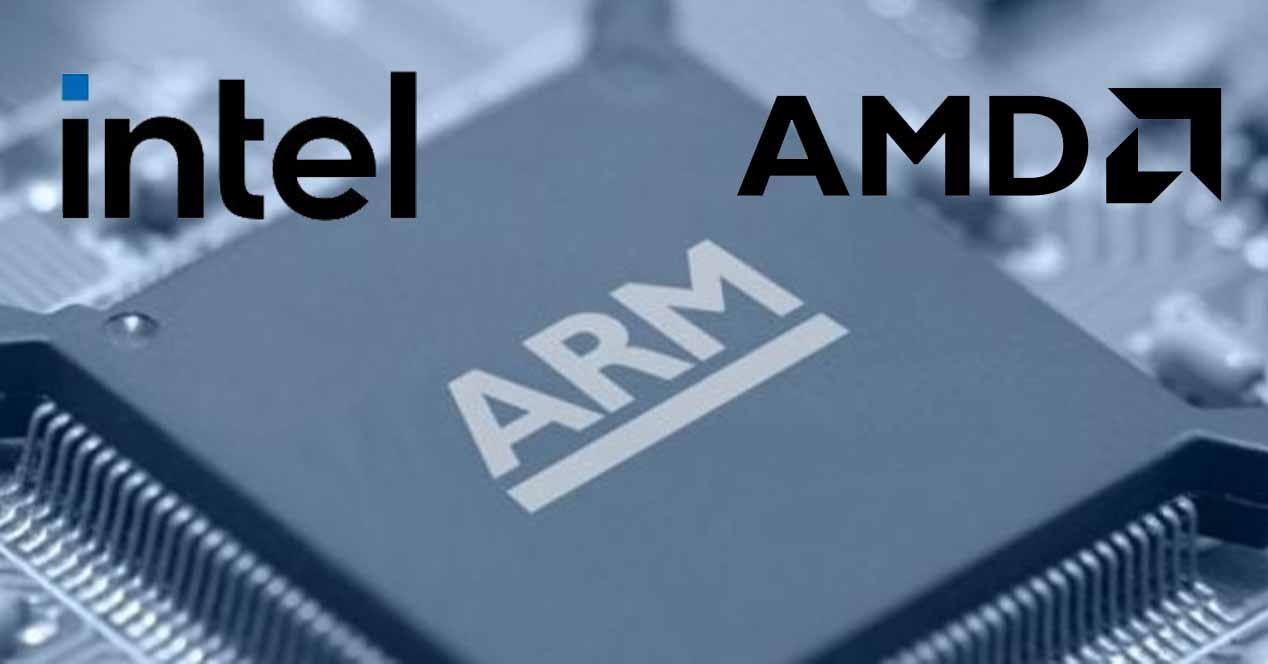While ARM strives for efficiency, a balance between power consumption and performance based on using fewer processing steps but slower speed cores with specific tasks, x86 bases its design on “raw power” , so Intel and AMD go for complex but large-scale cores: in the same space as ARM there are a lot less cores, but a lot more powerful and versatile.
Can Intel and AMD Aspire to an ARM Ecosystem?
Before we start to assess whether Intel and AMD can develop an ARM ecosystem, we need to understand how what they currently have works. The x86 architecture is based on CISC, with very extensive instruction sets that are used to solve very complex operations, that is, they have enormous versatility to perform any operation with the same core. ARM, on the other hand, uses RISC, with single cycle instructions that are only capable of performing certain specific tasks, so it is necessary to incorporate many and varied cores to do the same.
Put simply, if Intel and AMD want to be able to have what they have now but using ARM architecture instead of x86 in their processors, they would have to completely change the internal design of these to integrate a large number of cores, much more than until now; These cores would be low powered and at lower speeds than they currently have, but they would also be much simpler and each of them arranged to perform certain sets of specific operations.
Therefore, the first thing they would have to give up would be their own processor designs and “go through the box” to incorporate ARM designs which, remember, don’t make processors, but only designs and sells the right to them. use to third party manufacturers. , which in this case would be AMD and Intel. This would necessarily imply a income reduction at first, but that would also be a huge R&D cost savings and design in such a way that in the long run there is every indication that it would be economically profitable for them.
Intel and AMD are already taking their “first steps” using this ARM architecture in some areas, such as processors for smartphones and servers, but they have yet to touch it at the consumer level like Apple has.
Is a software level transition feasible?
Things change when it comes to firmware and software. The internal code of processors carries a heavy weight in terms of performance, and they should start from scratch in that regard, just as they should start from scratch in terms of software.
However, that would be a very small part if we compare it with the software ecosystem of any PC; operating systems must be programmed and optimized largely for each of the architectures, in particular to obtain good performance. This means that at the operating system level and any program that runs on it should be completely rewritten or, at least, ported. In this regard, it must be said that it is easier to program for ARM than for x86 given the simplicity with which its cores operate, but it would still be a huge job.
In other words, if AMD and Intel decided to switch to ARM, it would ruin many software companies as they would be forced to follow in their footsteps and reprogram their software to accommodate the new architecture. It is not impossible, but it would involve devoting a lot of resources to it, and we cannot rule out that the big software companies are putting pressure on Intel and AMD not to take such a step.
So will we see AMD and Intel processors with ARM architecture?
Only they know it, but everything indicates that at least in the short and medium term it is something that we are not going to see. The fact that ARM cores have simple instructions compared to the x86 architecture would lead to too many changes, a complete restructuring of Intel and AMD and software companies, and this is something that cannot be done. overnight. morning. Could this happen in the future? Yes, certainly because it is something viable. Apple has already demonstrated that you can have a fully functional ARM ecosystem, although we have also seen that with current technology they are not able to deliver the performance of the x86 architecture.
We would be faced with a paradigm in which consumption and efficiency would obviously prevail since ARM processors consume much less than x86, although many more cores are needed to be able to perform the same tasks. But, in the world we live in where, in addition to efficiency, raw performance prevails, it seems difficult for consumers to want to give it up for less consumption. Therefore, everything indicates that this potential transition is not exactly a goal in which Intel and AMD are investing time and resources today.










